Menu
Menu
CPR, First Aid, BLS, ACLS, PALS certifications.
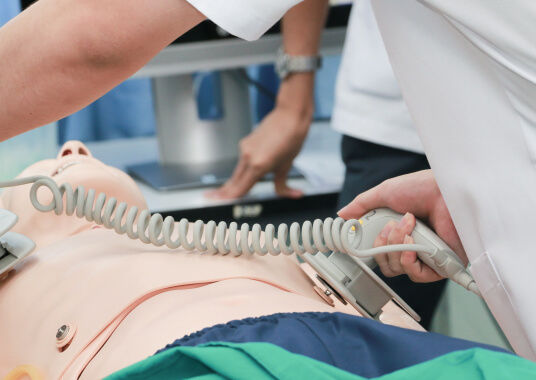
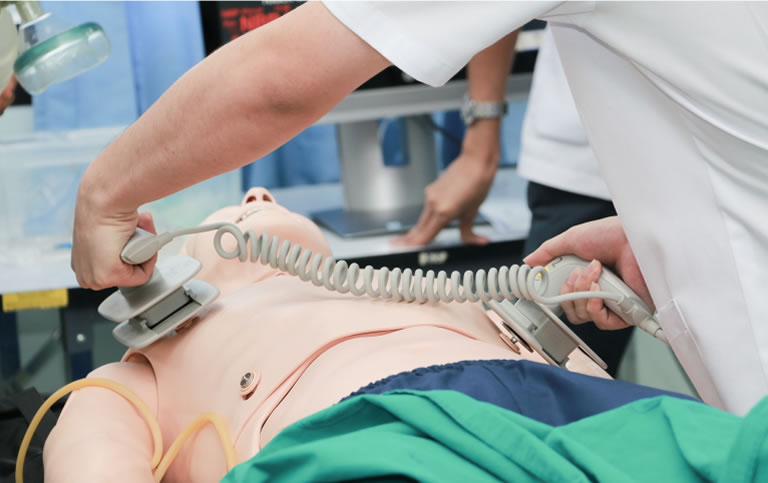

$119.00 $169.00
| Chapters | CE Credits | Validity | Cost | Duration | ECC | Exam Attempts | Wallet Card |
|---|---|---|---|---|---|---|---|
| 17 | 4.0 – 8.0 | 2 Years | $119.00 | 3-4 Hrs | Compliant | Unlimited | Download/Print/Mail |
Atrial fibrillation is when the heart beats do not occur at the same intervals. It is known as the quivering of the muscles and involves both the atriums of the heart.
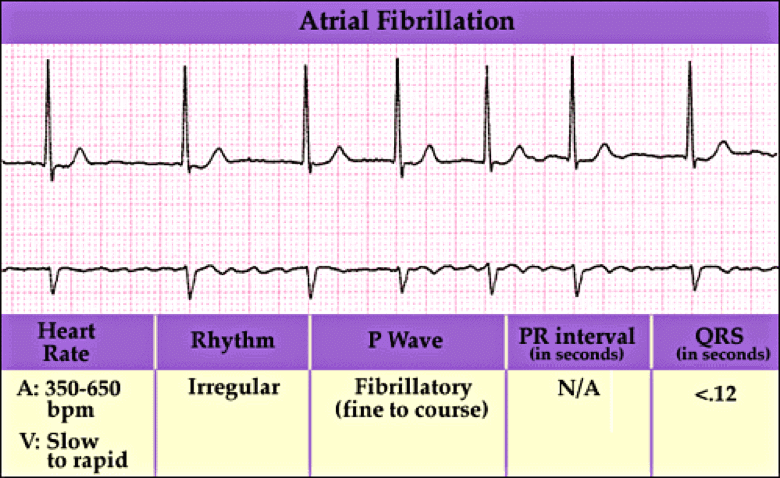
Atrial flutter is abnormal heart rhythm causing fast irregular heartbeat. Starts in the atrium and can lead to atrial fibrillation. Usually has a ‘saw-toothed’ appearance.
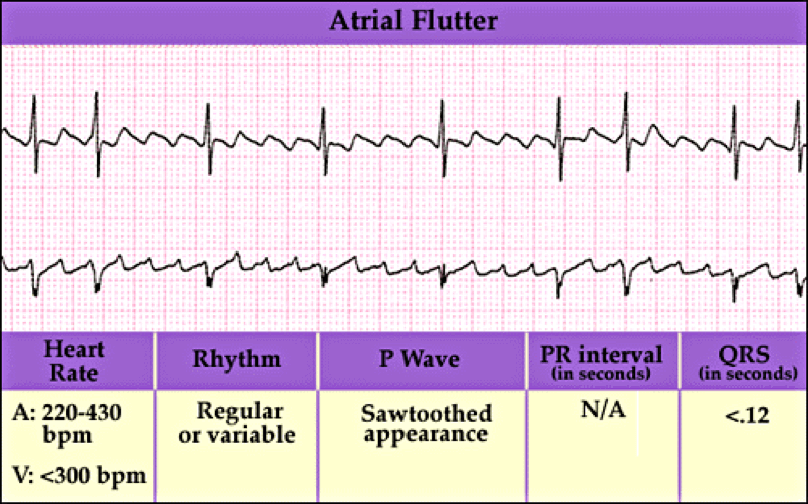
Supraventricular Tachycardia (SVT) is a rapid and narrow heartbeat that starts in the atria or AV node.

Monomorphic VT is heart rate of >150 bpm but all QRS look the same.

Polymorphic VT is when different areas in the ventricles fire fast, uncoordinated impulses.

Wide-complex tachycardia is due to ventricular tachycardia or SVT with wide QRS complex (at least 0.12 seconds).
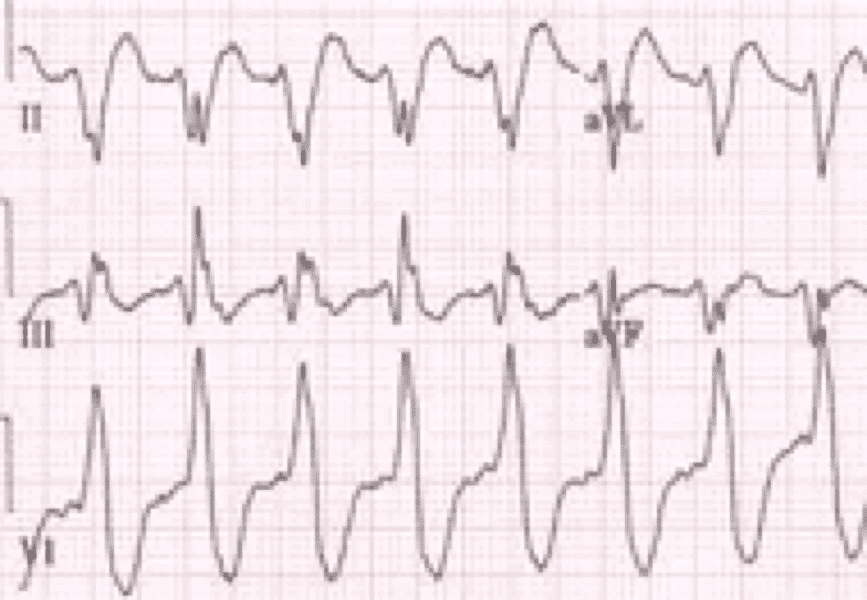
Scenario: A 45 year old patient arrives to the hospital with chest pain and palpitations. As the nurse was obtaining medical history and checking vital signs the patient faints for a few minutes.
The following is an algorithm showing management of unstable tachycardia in detail: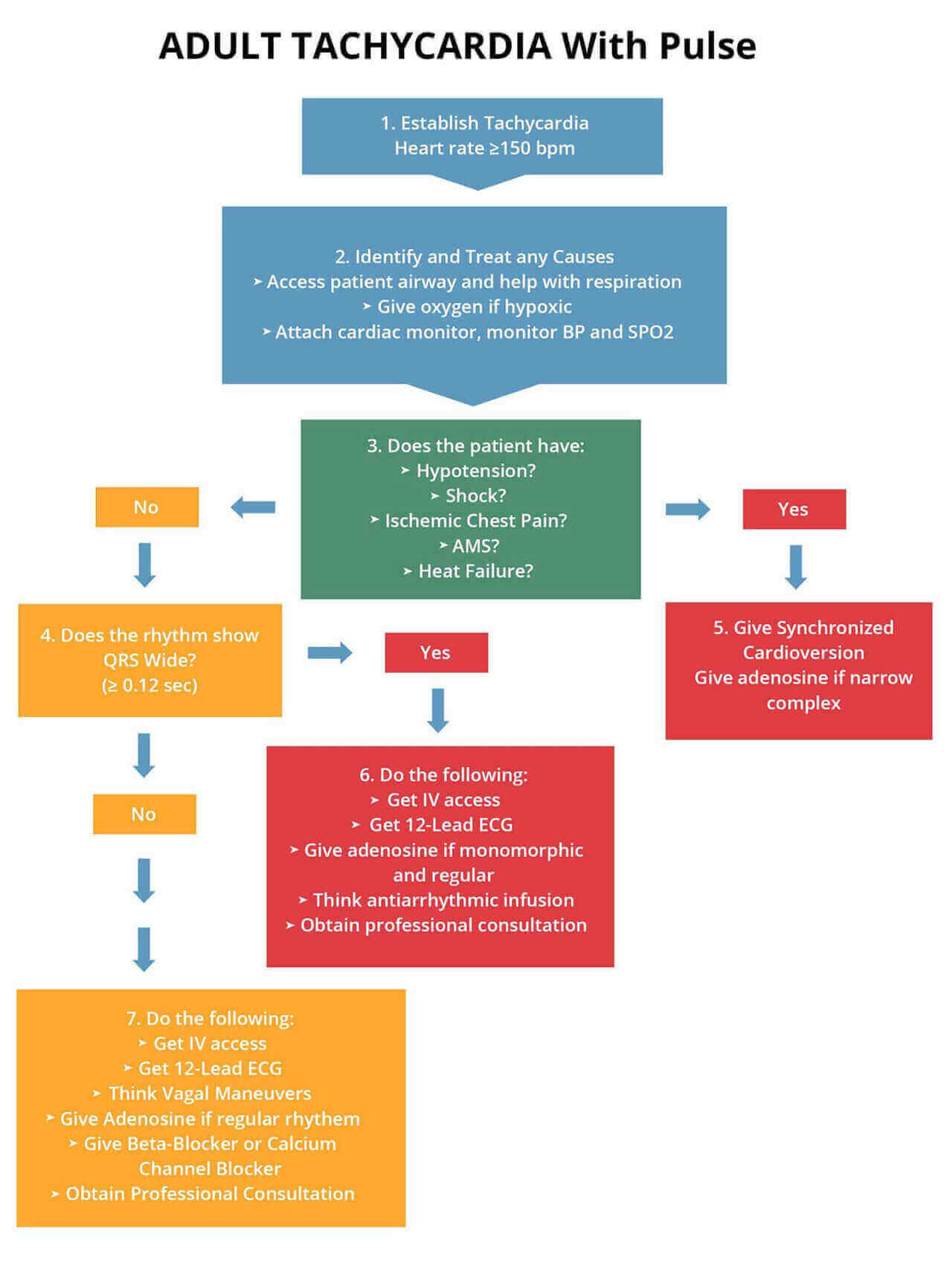
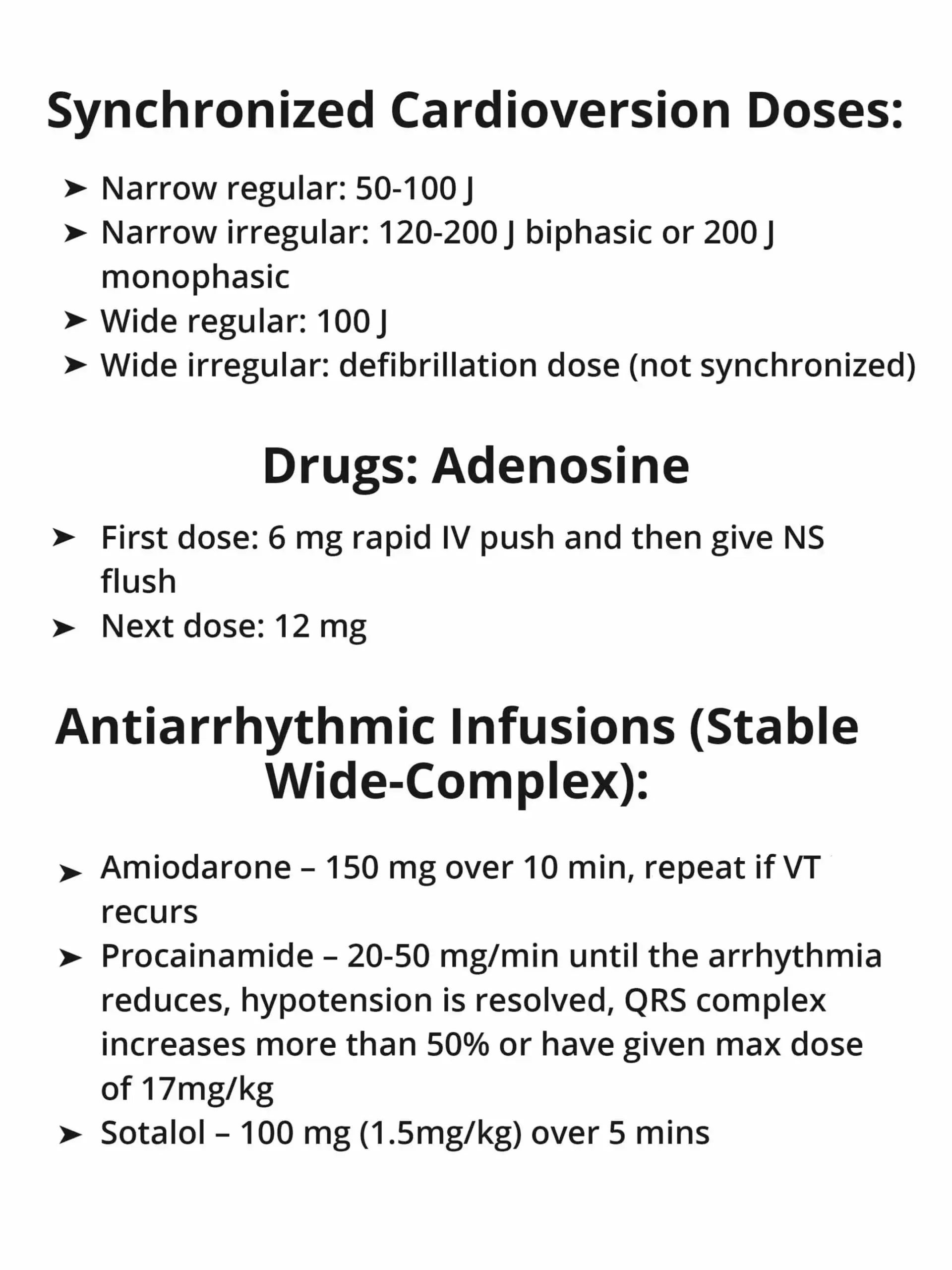
Synchronized cardioversion is used during unstable tachycardia, but there may be times when unsynchronized cardioversion will need to be used.
| Rhythm | First Dose (Monophasic Defibrillator) |
| Unstable atrial fibrillation | 200 J |
| Unstable Monomorphic VT | 100 J |
| Other unstable SVT, Atrial Flutter | 200 J |
| Unstable polymorphic VT (irregular form & rate) | Use like VF with high-energy shock (360J) |
| How to Give Synchronized Cardioversion |
Anesthetize patient unless they are crashing or unstable
|
You have completed Chapter XV. Now you should be able to: